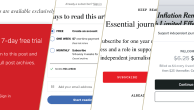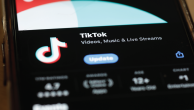This report is based on findings from seven surveys conducted in the summer and early fall of 2011.
Tablet Owner Phone Surveys
The overall portrait of tablet computer users among the general public is based on aggregated data from five telephone surveys conducted on landlines and cell phones June 30-July 31, 2011 with national samples of adults 18 years of age or older living in the continental United States. Interviews were conducted with a total of 5,014 adults, including 504 who use a tablet computer. A total of 3,150 respondents were interviewed on a landline telephone (including 293 tablet users) and 1,864 were interviewed on a cell phone (including 211 tablet users). The following table shows the field dates and sample sizes for each of the five surveys:
|
Field dates |
Adult |
Tablet user |
|
June 30-July 3, 2011 |
1,001 |
92 |
|
July 7-10, 2011 |
1,007 |
88 |
|
July 14-17, 2011 |
1,006 |
98 |
|
July 21-24, 2011 |
999 |
126 |
|
July 28-31, 2011 |
1,001 |
100 |
|
5,014 |
504 |
The survey was conducted by interviewers at Princeton Data Source under the direction of Princeton Survey Research Associates International. A combination of landline and cell phone random digit dial samples were used; both samples were provided by Survey Sampling International. Interviews were conducted in English. Respondents in the landline sample were selected by randomly asking for the youngest adult male or female who is now at home. Interviews in the cell sample were conducted with the person who answered the phone, if that person was an adult 18 years of age or older.
The combined landline and cell phone sample are weighted using an iterative technique that matches gender, age, education, race, Hispanic origin, region, and population density to parameters from the March 2010 Census Bureau’s Current Population Survey. The sample also is weighted to match current patterns of telephone status, based on extrapolations from the 2010 National Health Interview Survey. The weighting procedure also accounts for the fact that respondents with both landline and cell phones have a greater probability of being included in the combined sample and adjusts for household size within the landline sample. Sampling errors and statistical tests of significance take into account the effect of weighting.
The error attributable to sampling that would be expected at the 95% level of confidence is plus or minus 2.0 percentage points for the total sample of 5,014 adults and 5.5 percentage points for the sample of 504 tablet users. In addition to sampling error, one should bear in mind that question wording and practical difficulties in conducting surveys can introduce error or bias into the findings of opinion polls.
Pew Research Tablet User Panel
Two additional surveys were conducted with adults in the Pew Research tablet user panel, created specifically for this study. This panel was developed by recontacting people previously identified as having a tablet computer in a large-scale survey effort that interviewed more than 40,000 adults from March to July 2011. Approximately 55% of the U.S. adult population lived in areas included in this survey; the sampling design for this survey was targeting a particular subgroup so it excluded areas of the U.S. with very few members of this subgroup.
To evaluate whether tablet users in this panel were similar to those reached in the general public survey, we compared the demographic characteristics of tablet users across both surveys and measures of how often people use their tablets overall and for specific activities. In addition, we compared a basic measure of news consumption and whether the tablet has changed how much time people are spending with the news across the two groups. See Appendix for these comparisons.
Tablet News Phone Survey
The first survey with the panel was conducted by telephone on landlines and cell phones July 15-30, 2011. Interviews were conducted with 1,159 members of the panel (635 by landline and 524 by cell phone), including 894 who get news on their tablet at least weekly. The survey was conducted by interviewers at Princeton Data Source under the direction of Princeton Survey Research Associates International. Interviews were conducted in English. Interviewers asked to speak with the person (identified by gender and age) who previously took part in a short telephone survey. After that person came to the phone, additional questions confirmed that they have a tablet computer (not another type of device) and that they themselves actually use the tablet computer.
The sample was weighted using an iterative technique that matched age, education, race and region to parameters based on tablet users identified in the general public survey. Sampling errors and statistical tests of significance take into account the effect of weighting. See the Appendix for comparison of the parameters for tablet users from the general public survey and the unweighted and weighted demographics of tablet users from the Pew Research panel phone survey.
The following table shows the sample sizes and the error attributable to sampling that would be expected at the 95% level of confidence for different groups in the survey:
|
Group |
Sample Size |
Plus or minus … |
|
All tablet users |
1,159 |
3.5 percentage points |
|
Tablet news users |
894 |
4.0 percentage points |
|
Get news on tablet… |
||
|
Mostly through browser |
347 |
6.5 percentage points |
|
Mostly through apps |
208 |
8.5 percentage points |
|
Both equally |
275 |
7.5 percentage points |
In addition to sampling error, one should bear in mind that question wording and practical difficulties in conducting surveys can introduce error or bias into the findings of opinion polls.
The response rate for the phone survey of the Pew Research tablet user panel was 22% in the landline sample and 28% in the cell sample. The response rate for the original screener survey, from which the sample for the tablet user panel was drawn, was 22% in the landline random digit dial (RDD) sample and 20% in the cell RDD sample.
Tablet News Web Survey
The second survey of the Pew Research tablet user panel was conducted online September 6-19, 2011 among a select group of respondents who get news on their tablet at least weekly and indicated they would be willing to be re-contacted by email for another survey. A total of 300 completed the follow-up web interview. This survey probed specifically on tablet news consumption in the past 7 days. The web survey was conducted in English by Princeton Survey Research Associates International. The initial question in the survey confirmed that the respondent had and still used their tablet computer.
The error attributable to sampling that would be expected at the 95% level of confidence is plus or minus 6.0 percentage points for the total sample of 300 tablet news users (who get news on their tablet at least weekly). In addition to sampling error, one should bear in mind that question wording and practical difficulties in conducting surveys can introduce error or bias into the findings of opinion polls.
All of those who agreed to be re-contacted and for whom we had a mailing address were sent an advance letter on August 15, 2011 to inform them they would receive an email invitation in the coming weeks and to give them $5 as a token of appreciation for completing the phone survey. The survey invitation was sent by email on August 30th and explained the purpose of the study, encouraged participation, provided the survey link and unique identification number and informed respondents they would receive $25 for completing the survey. Two additional email reminders were sent to all those who had not yet completed the survey on September 13th and September 16th. All respondents who completed the survey and provided a mailing address were sent $25 for their participation.
The response rate for the web survey, which was sent to a subsample of respondents from the initial phone survey with the Pew Research tablet user panel, was 46%.
APPENDIX
|
Demographic Comparison of Tablet Users From General Public Survey and |
|||
|
|
Tablet users from general public survey |
Tablet users from Pew Research panel |
|
|
Unweighted |
Weighted |
||
|
Gender |
% |
% |
% |
|
Men |
52 |
53 |
54 |
|
Women |
48 |
47 |
46 |
|
|
|||
|
Age |
|||
|
18-24 |
13 |
8 |
12 |
|
25-34 |
21 |
16 |
21 |
|
35-44 |
25 |
22 |
25 |
|
45-54 |
20 |
22 |
20 |
|
55-64 |
15 |
20 |
15 |
|
65+ |
7 |
13 |
7 |
|
Education |
|||
|
College graduate+ |
51 |
70 |
23 |
|
Some college |
23 |
21 |
24 |
|
High school or less |
26 |
9 |
53 |
|
Race |
|||
|
White |
74 |
85 |
77 |
|
Black |
13 |
9 |
13 |
|
Other |
12 |
6 |
11 |
|
Region |
|||
|
Northeast |
18 |
19 |
19 |
|
Midwest |
18 |
20 |
18 |
|
South |
38 |
31 |
37 |
|
West |
26 |
31 |
26 |
|
Tablet Usage Comparison of Tablet Users From General Public Survey and |
||
|
|
Tablet users from general public survey |
Tablet users from |
|
How often use tablet? |
% |
% |
|
Several times a day |
59 |
61 |
|
About once a day |
18 |
16 |
|
A few times a week |
13 |
14 |
|
About once a week |
4 |
4 |
|
Less often |
6 |
5 |
|
|
||
|
Mean # of minutes spent on tablet yesterday |
108 |
95 |
|
Use tablet at least daily to… |
||
|
Browse or search the web |
66 |
67 |
|
Send or receive email |
56 |
54 |
|
Get news, including everything from the latest headlines to in-depth articles and commentary |
53 |
52 |
|
Use social networking sites, like Facebook, Twitter or LinkedIn |
41 |
39 |
|
Play games |
23 |
30 |
|
Create and edit documents |
22 |
17 |
|
Read books |
19 |
12 |
|
Watch movies or video |
16 |
12 |
|
Read magazines |
10 |
7 |
|
How often do you like to follow the news? |
||
|
All or most of the time |
62 |
68 |
|
Some of the time |
20 |
18 |
|
Only now and then |
9 |
9 |
|
Hardly ever |
9 |
5 |
|
Never/Don’t know (Vol.) |
1 |
* |
|
Among tablet news users: |
||
|
More time |
23 |
30 |
|
Less time |
5 |
4 |
|
Same amount of time |
71 |
65 |
|
Don’t know (Vol.) |
1 |
* |




